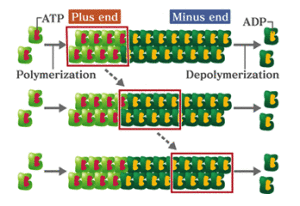This month’s intriguing image is a set of videos produced by cell biologist James Zheng’s laboratory. Looking at this video of a cell can be mesmerizing. The edges of the cell appear to be flowing inward, like a waterfall. Zheng explains that this is a phenomenon called “actin retrograde flow.â€
Actin is a very abundant protein found in animals, plants and fungi that forms filaments, making up the cell’s internal skeleton. What we are seeing with retrograde flow is that molecules of actin are being added to one end of the filaments while coming loose from the other end.
Zheng’s laboratory is studying a protein called cofilin, which disassembles actin filaments. Using a technique called CALI (chromophore-assisted laser inactivation) the scientists http://www.troakley.com/ used a laser to blast cofilin, inactivating it. This is why, partway through the loop, after the word CALI appears, the flow slows down. Postdoctoral fellow Eric Vitriol is the lead author on a paper in Molecular Biology of the Cell that includes these videos.




